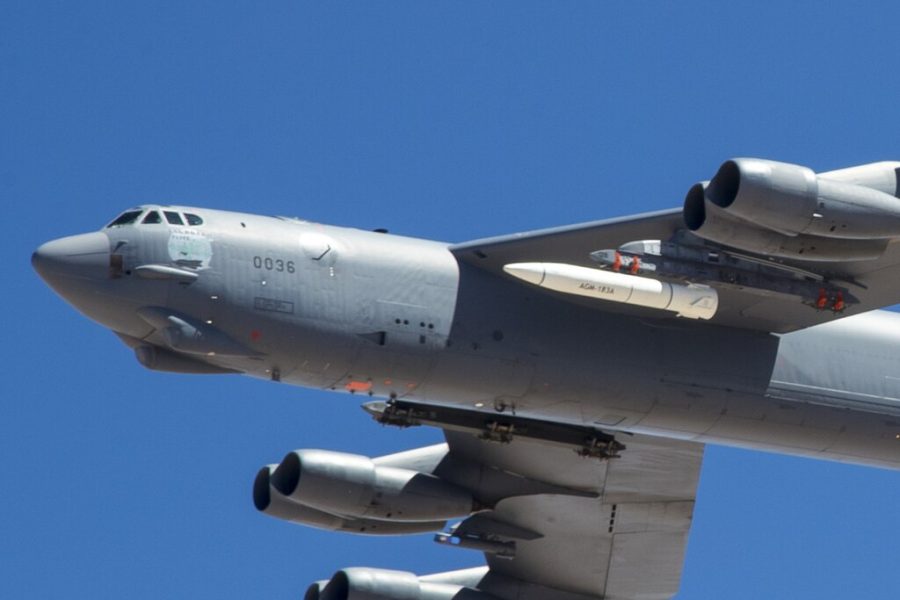Just a few days after the Air Force published imagery of a live hypersonic AGM-183A Air-Launched Rapid Response Weapon (ARRW) mounted on a B-52H in Guam, a test of that missile is all but certainly imminent—warning bulletins about a weapons test in the central Pacific have been issued in a window running now through March 10.
The test may have already taken place, but the Air Force was not immediately able to comment on this.
The Navigation Warning, issued to apprise aircraft and vessels transiting the region of the imminent test, gives coordinates of the danger zone, culminating in a target area north and east of the Kwajalein Atoll test area. The distance of flight is stated as just over 2,100 miles, off a B-52 flying from Andersen Air Force Base, Guam, to a launch point about 2,500 miles away; approximately the profile of an operational ARRW mission.
Monitoring and tracking vessels and aircraft are also either in the test area or en route, suggesting the Pentagon plans to use the event not only to validate the performance of the ARRW, but to characterize the behavior of an incoming, maneuvering hypersonic missile and collect data useful for developing hypersonic missile defenses.
Missile Defense Agency specially-modified Gulfstream aircraft performing High Altitude Observatory (HALO) missions have been operating from Guam and Hawaii in recent days, according to flight tracker data.
A Pentagon official said this first flight of the ARRW outside of the usual test area off the California coast is taking advantage of missile surveillance equipment that would also be used to detect and track missiles launched from China or possibly North Korea.
Asked whether the test was being conducted in this region as a message to China that the U.S. has an operational hypersonic capability, the official said, “they can interpret this any way they want … but you would expect us to derive as much value from one of these [events] as we possibly can.”
Programmatically, the Air Force has indicated that there is just one more ARRW test planned to complete the program, which service acquisition executive Andrew Hunter said last year would end in 2024. In written testimony to the House Armed Services Committee last March, Hunter said that although the Air Force didn’t plan to put ARRW into production, there is “inherent benefit to completing All-Up Round test flights,” in order to capture “the learning and test data that will help inform future hypersonic programs and potential leave-behind capability.”
Under the ARRW contract with Lockheed Martin Missiles and Fire Control, the ARRW development effort calls for designing the boost-glide type hypersonic missile, testing it, demonstrating a production capability “at scale,” and having some additional all-up rounds that could be used operationally. How many leftovers the program is to generate has never been disclosed, but the missile shown at Andersen Air Force Base, Guam was labeled as “All-Up Round No. 5.”
Along with releasing imagery of the missile, the Air Force said it was conducting “familiarization” training with air and ground crews on hypersonic systems, which included an “academics” element.
A similar familiarization program was held before an ARRW test last year, at Edwards Air Force Base, Calif.
The ARRW is a boost-glide weapon, meaning that it is accelerated to hypersonic speed by a booster and then glides at hypersonic speed to the target, making unpredictable turns along the way to avoid defenses. The booster is the same as used in the Army Tactical Missile System rocket. After reaching hypersonic speed, a clamshell shroud opens, allowing the much smaller hypersonic glide vehicle to emerge and complete its mission.
If the test succeeds, it will demonstrate that the Air Force can generate a B-52 with ARRW from a forward location, fly a multihour mission to a launch point, launch an ARRW, and have it hit a target area after achieving hypersonic speed, with high probability of destroying the target.
